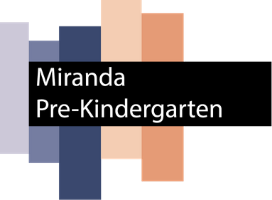What is the Child Care Subsidy?
And are you eligible?
The Child Care Subsidy (CCS) is the main way the Australian Government helps families with child care fees. The CCS is a rebate paid to providers (child care centres) who pass it on to families as a fee reduction. This typically appears as a credit on your invoice your will receive from your child care service.
How much is the Child Care Subsidy?
The rebate amount you will receive varies based on your combined family income. It ranges from 85% – 20%, and up to 95% for an eligible second child thanks to some recent welcomed changes. See below for the table of rebate amounts:
|
Your family |
Child Care |
|
$0 to $70,015 |
85% |
|
More than $70,015 to below $175,015 |
Between 85% and 50% |
|
$175,015 to below $254,305 |
50% |
|
$254,305 to below $344,305 |
Between 50% and 20% |
|
$344,305 to below $354,305 |
20% |
|
$354,305 or more |
0% |
For example, if your daily fees are $110 for your child, and your household combined income is $180,000 then you would receive a 50% rebate, so you are out-of-pocket $55. If you have a second child under 5 in care, they will be eligible for an additional 30% rebate on their daily fee (provided the first child is also under 5).
For more information on the CCS Eligibility, visit our CCS page here: Miranda Pre-Kindergarten – Child Care Subsidy
For more information on the Higher Child Care Subsidy, head to the Department of Education, Skills and Employment’s Information page here: DESE Higher Child Care Subsidy
Can I get the Child Care Subsidy?
To be eligible for the Child Care Subsidy the following requirements must be met:
- The child must
- be a ‘Family Tax Benefit child’ or ‘regular care child’ and
- be 13 or under and not attending secondary school and
- meet immunisation requirements
- The person claiming the Child Care Subsidy, or their partner, must
- meet residency requirements and
- meet the Child Care Subsidy activity test (or be eligible for an exemption) and
- be liable to pay for care provided under a Complying Written Arrangement
(their written agreement) with their child care provider
- Furthermore, child care must be provided by an approved provider in Australia and not
be part of a compulsory education program, for example school.
There are exemptions for individuals who genuinely cannot meet some eligibility requirements.
Additionally, there are other elements like the Activity Test that
determines the number of hours of subsidised child care to which a family will
be entitled will depend on how much time parents spend undertaking recognised
activities, for example work, training, volunteering or study. For more
information on the Activity Test, visit DESE
– Activity Test
Other helpful information and advice for the Child Care Subsidy
- Apply for the Child Care Subsidy as soon as you have enrolment confirmed, don’t
wait until you start. This process can take some time to be approved by Centrelink, especially when combined with a Family Tax Benefit Claim. - Download the Centrelink Express App to streamline claims, accessing Reference Numbers and Updating your Income Estimate. If you don’t have the app, make sure you keep a note of your families Reference Numbers handy!
- You will need to update your Income Estimate as your families work situation changes. As the rebate is calculated on your combined family income, any changes like Parental Leave or a pay increase or decrease could move you into a higher or lower rebate bracket. Failure to update your Income Estimate could result on overpayment of the subsidy, which would then need to be paid back at tax time.
- Lastly, the CCS will come into effect from your child’s first physical attendance. For example, if your enrolment commences on January 3, but you are on holidays or your child is unwell and is unable to attend until January 17, then the first CCS rebate will be paid from January 17 and you are required to pay full fees for January 3 and January 10.

